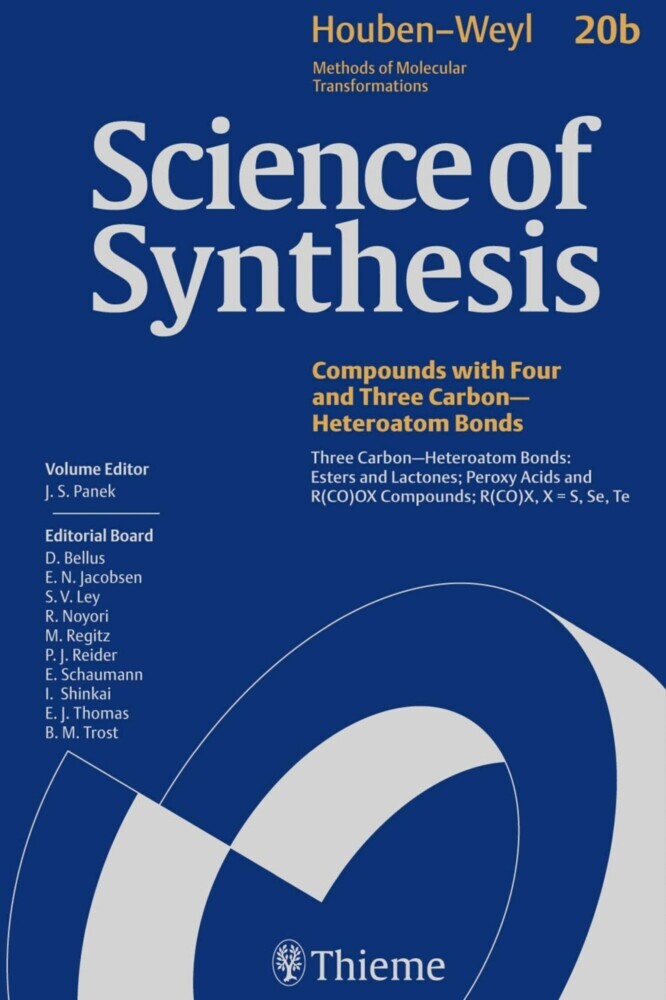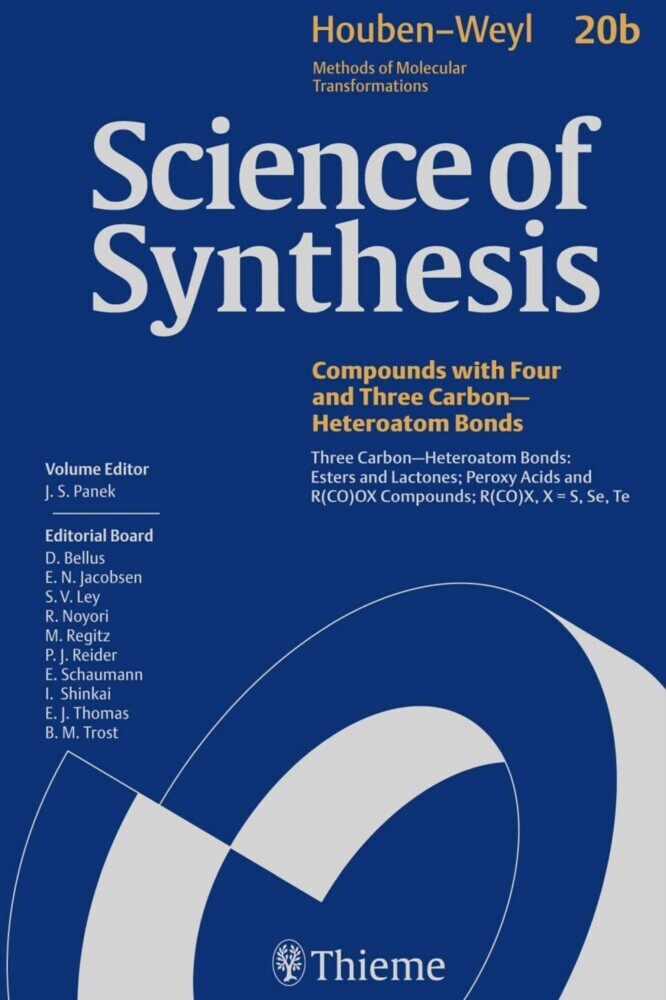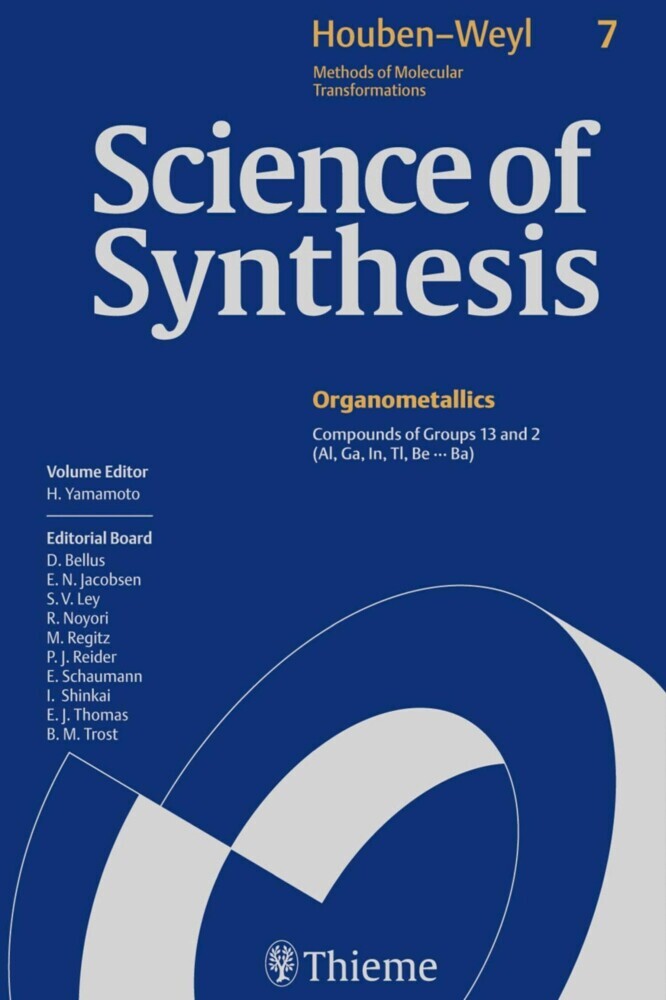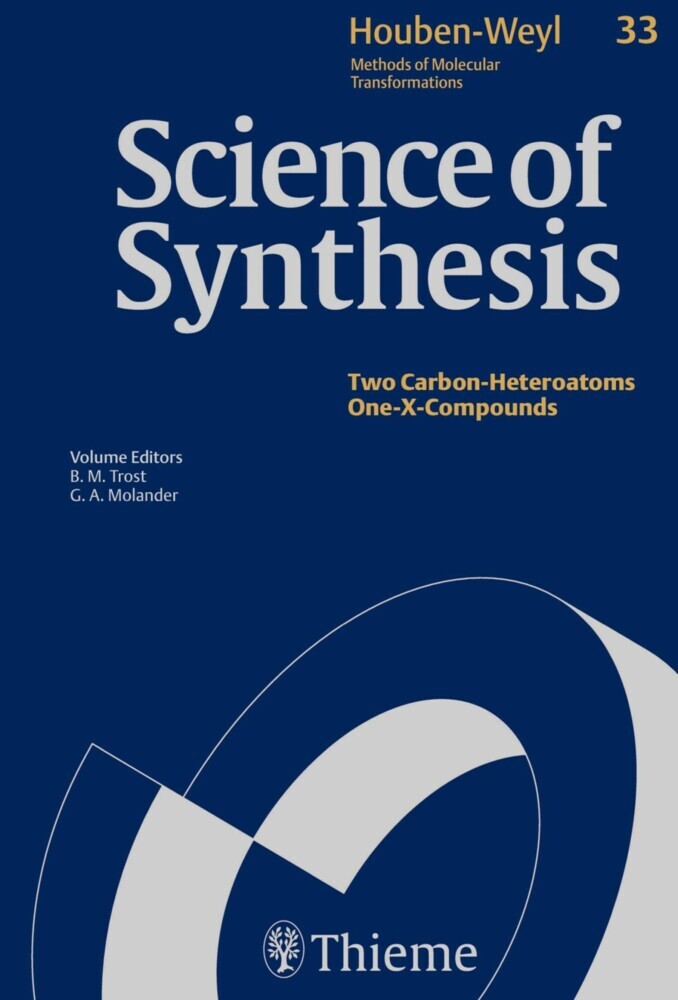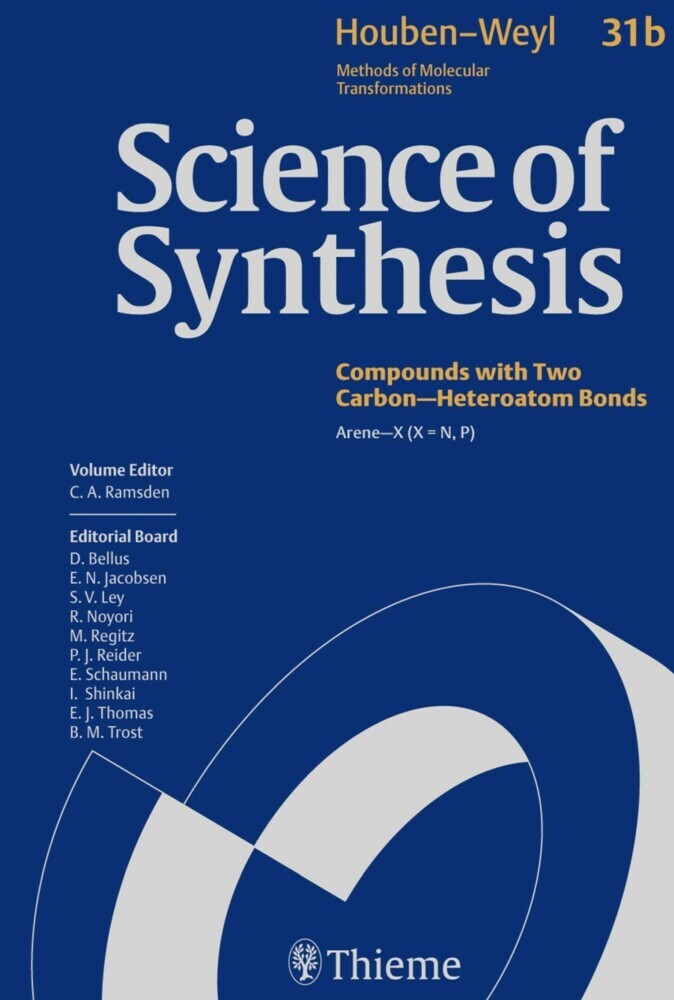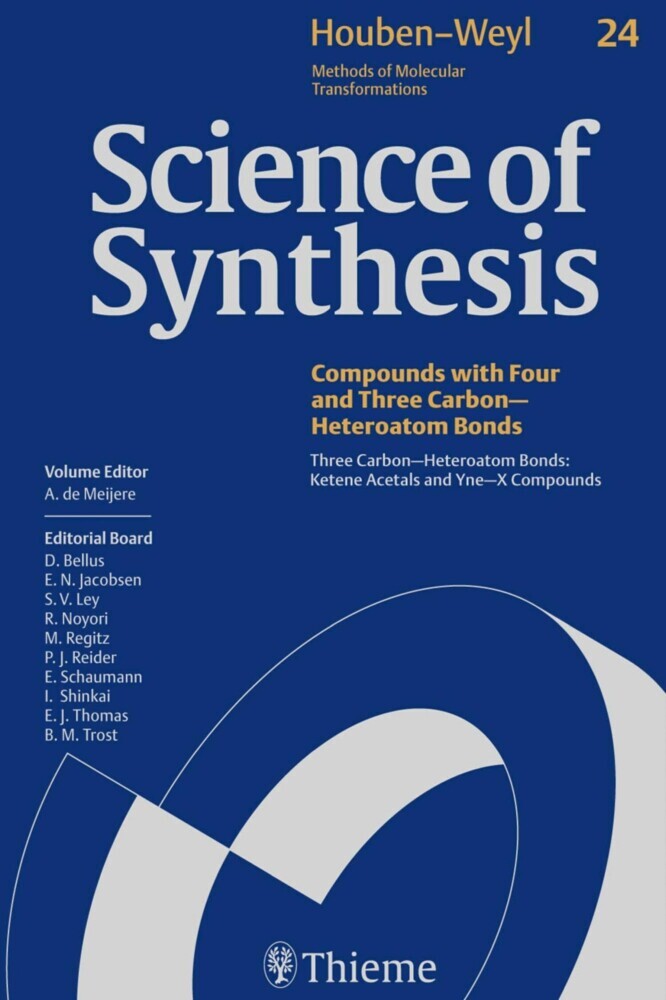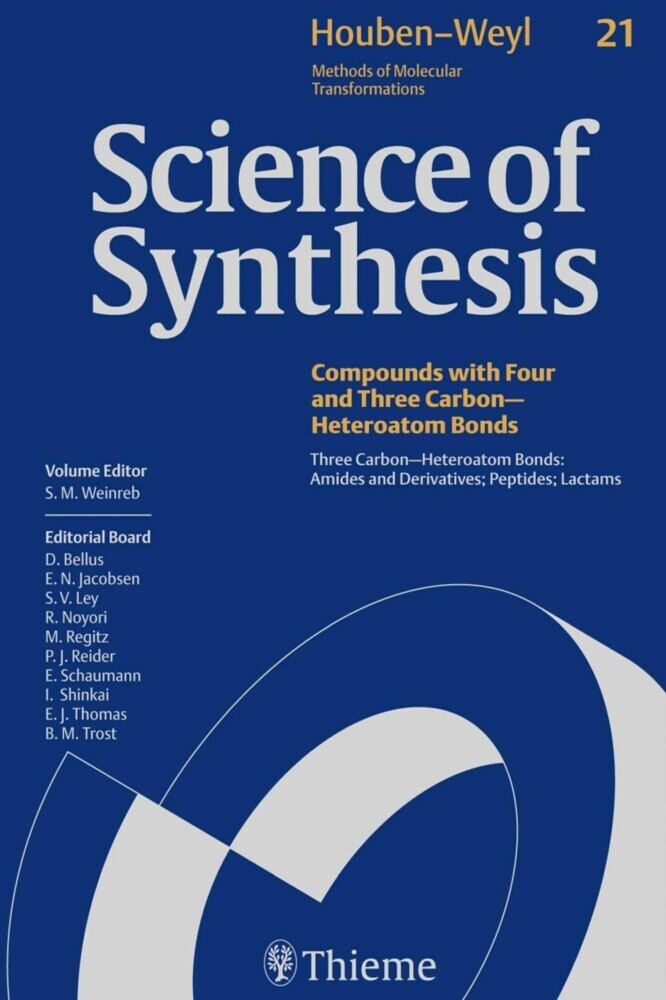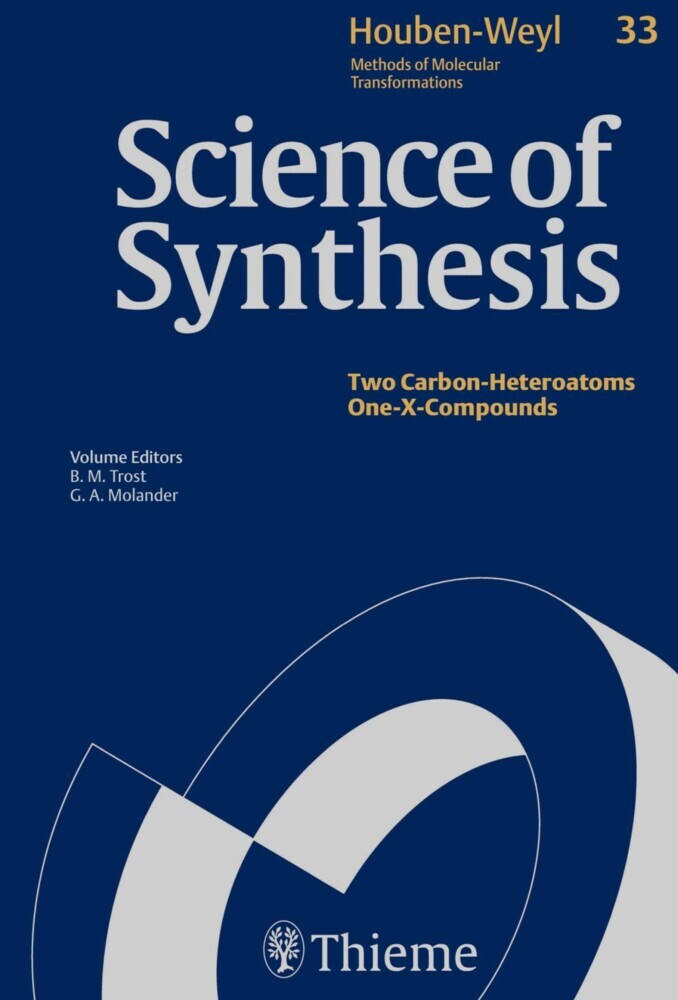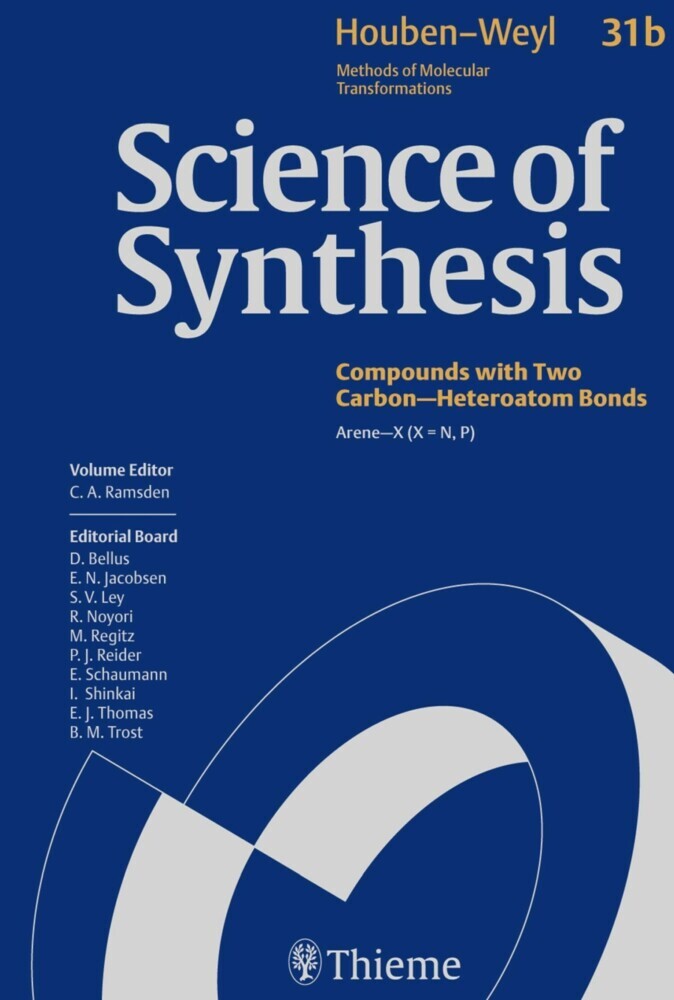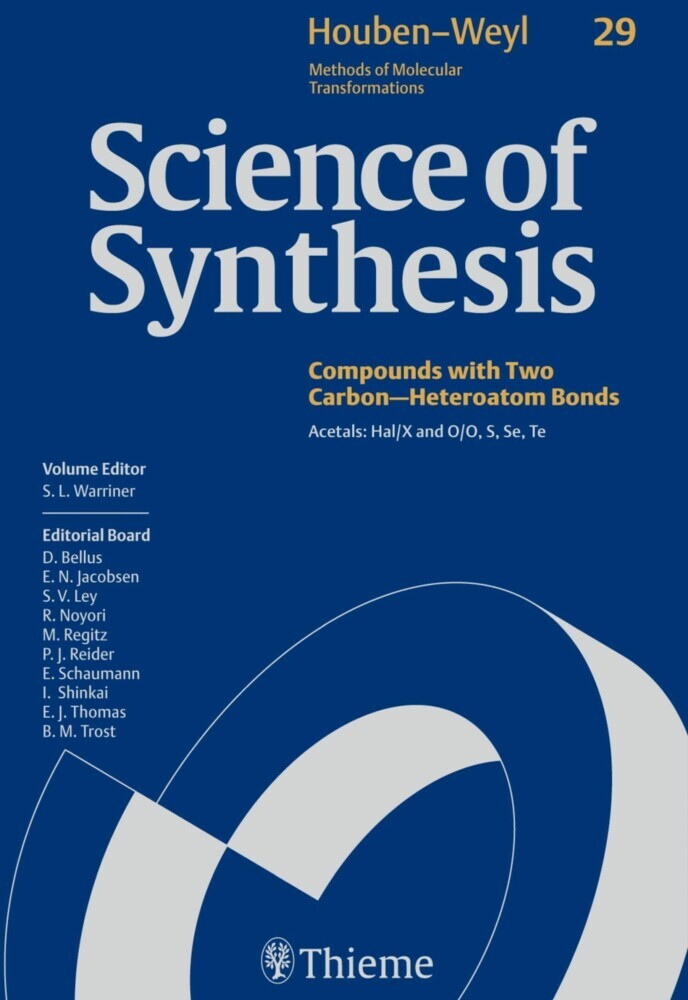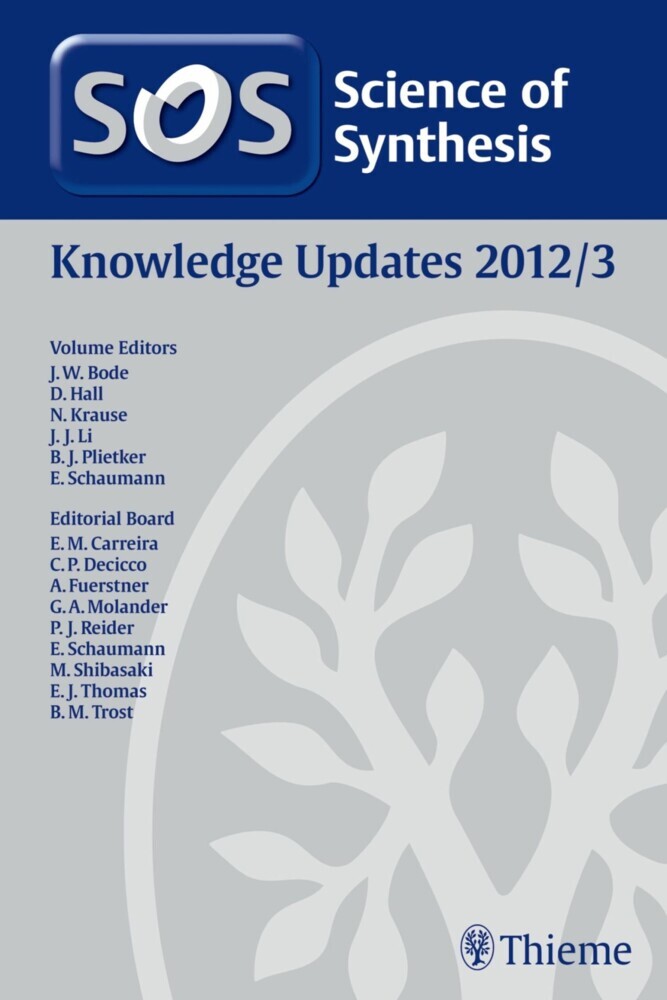Science of Synthesis: Houben-Weyl Methods of Molecular Transformations Vol. 20b
Three Carbon-Heteroatom Bonds: Esters, and Lactones; Peroxy Acids and R(CO)OX Compounds; R(CO)X, X=S, Se, Te
Science of Synthesis: Houben-Weyl Methods of Molecular Transformations Vol. 20b
Three Carbon-Heteroatom Bonds: Esters, and Lactones; Peroxy Acids and R(CO)OX Compounds; R(CO)X, X=S, Se, Te
Science of Synthesis provides a critical review of the synthetic methodology developed from the early 1800s to date for the entire field of organic and organometallic chemistry. As the only resource providing full-text descriptions of organic transformations and synthetic methods as well as experimental procedures, Science of Synthesis is therefore a unique chemical information tool. Over 1000 world-renowned experts have chosen the most important molecular transformations for a class of organic compounds and elaborated on their scope and limitations. The systematic, logical and consistent organization of the synthetic methods for each functional group enables users to quickly find out which methods are useful for a particular synthesis and which are not. Effective and practical experimental procedures can be implemented quickly and easily in the lab.// The content of this e-book was originally published in October 2006.
Science of Synthesis
Science of Synthesis
1;Science of Synthesis - Volume 20b: Three Carbon--Heteroatom Bonds: Esters and Lactones; Peroxy Acids and R(CO)OX Compounds; R(CO)X, X = S, Se, Te;11.1;Title page;31.2;Imprint;51.3;Preface;61.4;Volume Editor's Preface;81.5;Overview;101.6;Table of Contents;121.7;20.5 Product Class 5: Carboxylic Acid Esters;401.7.1;20.5.1 Product Subclass 1: Alkyl Alkanoates;401.7.1.1;20.5.1.1 Synthesis from Carbonic Acid Derivatives;621.7.1.1.1;20.5.1.1.1 Method 1: Use of Carbonic Acid Diesters;621.7.1.1.1.1;20.5.1.1.1.1 Variation 1: Reactions with Enolates;621.7.1.1.1.2;20.5.1.1.1.2 Variation 2: Reactions with Carbanions without Stabilizing Electron-Withdrawing a-Heteroatom Groups;671.7.1.1.1.3;20.5.1.1.1.3 Variation 3: Reaction with a-Heteroatom-Stabilized Carbanions;701.7.1.1.1.4;20.5.1.1.1.4 Variation 4: Intramolecular Rearrangements;721.7.1.1.2;20.5.1.1.2 Method 2: Use of Haloformates;751.7.1.1.2.1;20.5.1.1.2.1 Variation 1: Reactions with Enolates;761.7.1.1.2.2;20.5.1.1.2.2 Variation 2: Reaction with Carbanions without Stabilizing Electron-Withdrawing a-Heteroatom Groups;801.7.1.1.2.3;20.5.1.1.2.3 Variation 3: Reaction with a-Heteroatom-Stabilized Carbanions;851.7.1.1.2.4;20.5.1.1.2.4 Variation 4: Other Syntheses;881.7.1.1.3;20.5.1.1.3 Method 3: Use of Cyanoformate Esters;901.7.1.1.3.1;20.5.1.1.3.1 Variation 1: Reaction with Enolates;911.7.1.1.3.2;20.5.1.1.3.2 Variation 2: Using Other Carbon Nucleophiles;951.7.1.1.3.3;20.5.1.1.3.3 Variation 3: Novel Reactions;971.7.1.1.4;20.5.1.1.4 Method 4: Use of Di-tert-butyl Dicarbonate;991.7.1.2;20.5.1.2 Synthesis from Carboxylic Acids and Derivatives;1081.7.1.2.1;20.5.1.2.1 Method 1: Synthesis from Carboxylic Acids;1081.7.1.2.1.1;20.5.1.2.1.1 Variation 1: Phosphorus Activation of Alcohols (Mitsunobu Reaction);1081.7.1.2.1.2;20.5.1.2.1.2 Variation 2: Dicyclohexylcarbodiimide Activation of Acids;1091.7.1.2.1.3;20.5.1.2.1.3 Variation 3: Direct Condensation of Acids and Alcohols Catalyzed by a Lewis Acid;1101.7.1.2.1.4;20.5.1.2.1.4 Variation 4: Direct Condensation of Acids and Alcohols Using Ammonium Salts;1111.7.1.2.2;20.5.1.2.2 Method 2: Synthesis from Acid Halides;1121.7.1.2.3;20.5.1.2.3 Method 3: Synthesis from Acid Anhydrides;1121.7.1.2.4;20.5.1.2.4 Method 4: Synthesis from Amides;1141.7.1.2.5;20.5.1.2.5 Method 5: Synthesis from 2-Alkyl-4,5-dihydrooxazoles;1141.7.1.2.6;20.5.1.2.6 Method 6: Synthesis from Nitriles;1151.7.1.2.7;20.5.1.2.7 Method 7: Synthesis from Ketenes;1161.7.1.2.7.1;20.5.1.2.7.1 Variation 1: Nucleophilic Addition of Alcohols;1161.7.1.2.7.2;20.5.1.2.7.2 Variation 2: Asymmetric Chlorination;1191.7.1.3;20.5.1.3 Synthesis from Aldehydes, Ketones, and Derivatives (Including Enol Ethers);1221.7.1.3.1;20.5.1.3.1 Synthesis from Aldehydes;1221.7.1.3.1.1;20.5.1.3.1.1 Oxidative Processes;1221.7.1.3.1.1.1;20.5.1.3.1.1.1 Method 1: Using Manganese(IV) Oxide and Sodium Cyanide;1221.7.1.3.1.1.2;20.5.1.3.1.1.2 Method 2: Using Bromine;1241.7.1.3.1.1.2.1;20.5.1.3.1.1.2.1 Variation 1: Using Pyridinium Tribromide;1261.7.1.3.1.1.3;20.5.1.3.1.1.3 Method 3: Using Iodine;1271.7.1.3.1.1.4;20.5.1.3.1.1.4 Method 4: Using Pyridinium Dichromate;1281.7.1.3.1.1.5;20.5.1.3.1.1.5 Method 5: Using Sodium or Calcium Hypochlorites;1291.7.1.3.1.1.6;20.5.1.3.1.1.6 Method 6: Using N-Bromosuccinimide;1311.7.1.3.1.1.6.1;20.5.1.3.1.1.6.1 Variation 1: Using N-Bromosuccinimide and Alkoxytrimethylsilanes or Alkoxytrialkylstannanes;1311.7.1.3.1.1.7;20.5.1.3.1.1.7 Method 7: Using N-Iodosuccinimide;1321.7.1.3.1.1.8;20.5.1.3.1.1.8 Method 8: Using Caro's Acid;1331.7.1.3.1.1.9;20.5.1.3.1.1.9 Method 9: Using Oxone;1331.7.1.3.1.1.10;20.5.1.3.1.1.10 Method 10: Using Trichloroisocyanuric Acid;1341.7.1.3.1.1.11;20.5.1.3.1.1.11 Method 11: Using Transition-Metal Catalysts;1351.7.1.3.1.1.12;20.5.1.3.1.1.12 Method 12: Using Electrochemical Oxidation;1361.7.1.3.1.1.13;20.5.1.3.1.1.13 Method 13: Using Ozone;1381.7.1.3.1.1.14;20.5.1.3.1.1.1
| ISBN | 9783131719416 |
|---|---|
| Artikelnummer | 9783131719416 |
| Medientyp | E-Book - PDF |
| Copyrightjahr | 2014 |
| Verlag | Georg Thieme Verlag KG |
| Umfang | 1203 Seiten |
| Sprache | Deutsch, Englisch |
| Kopierschutz | Digitales Wasserzeichen |

